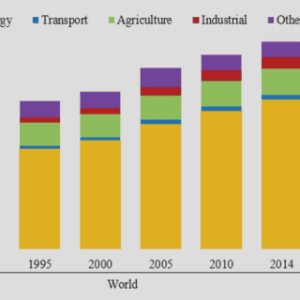(Downloads - 0)
For more info about our services contact : help@bestpfe.com
Table of contents
Chapter I : Stereodivergence in asymmetric catalysis: towards selecting the configuration of consecutively formed stereogenic centers in a single pot catalytic process
I.1. General introduction
I.2. Examples of stereodivergent strategies
I.2.a. Stereodivergency in concerted reactions
I.2.a.i. By tuning the substrate structure
I.2.a.ii. By catalyst redesign
I.2.a.iii. By changing the reaction conditions
I.2.a.iv. By changing the ligand
I.2.a.v. By changing the metal cation
I.2.b. Case of stereodivergent dual catalysis
I.2.c. Case of cascade (sequential) catalysis
I.2.d. Conclusion
I.3. Enantiodivergency by means of switchable asymmetric catalysts
I.3.a. Light
I.3.b. Redox potential
I.3.c. Temperature
I.3.d. Combined heat and light stimuli
I.3.e. Helical polymers as scaffolds for switchable catalysis
I.3.e.i. Switchable helical covalent catalysts
I.3.e.ii. Switchable helical supramolecular catalyst
I.4. In situ control of product configuration by means of switchable asymmetric catalysts
I.4.a. With two (pseudo) enantiomeric catalysts
I.4.b. By two catalysts anchored on the rotating arm of a substrate
I.4.c. With a single asymmetric catalyst
I.5. Description and objectives of the project
I.6. References
Chapter II : Phosphine-containing BTA ligands with various aryl groups on the phosphorous atom: Synthesis, characterization, assembly behavior, and implementation in asymmetric copper catalyzed hydrosylilation of 1-(4-nitrophenyl)ethanone
II.1. Introduction
II.1.a. Synthesis and importance of BTAs
II.1.b. Helical BTA ligands for asymmetric reactions
II.1.c. Role of the ligand structure in catalyst design
II.1.d. Designing a new set of phosphine-containing BTA ligands
II.2. Synthesis of a new set of phosphine-containing BTA ligands
II.2.a. General retrosynthetic route
II.2.b. Synthesis of 4-P(Mesityl)2-aniline, 4-P(Ph)2-aniline, and 4-P(Xylyl)2-aniline via protocol I
II.2.c. Synthesis of new 4-P(Ar)2-aniline derivatives via protocol II
II.2.c.i. Issues with the purity and stability of some PAr2Cl precursors
II.2.c.ii. Attempted synthesis of some PAr2Cl precursors
II.2.c.iii. Synthesis of new phosphinoaniline derivatives via protocol II
II.2.d. Synthesis of the BTA ligands
II.2.e. Table of comparison between protocol I and II for the synthesis of BTA-pPPh2
II.3. Structural characterization of the (S&S) co-assemblies by SANS and FT-IR analyses
II.4. Implementation in copper-catalyzed hydrosilylation of 1-(4-nitrophenyl)ethenone
II.5. Conclusion
II.6. Annex
II.6.a. Experimental procedures
II.6.b. Synthesis of the BTA ligands
II.6.c. NMR data
II.6.d. Selected chiral GC analyses
II.7. References
Chapter III Copper-catalyzed hydro-functionalization reactions with sergeants-and-soldiers type helical BTA catalysts : Hydroamination of styrene and cascade hydrosilylation/hydroamination of enone derivatives
III.1. Introduction
III.1.a. Hydrosilylation of unsaturated substrates by phosphine copper hydride catalysts
III.1.b. Regioselectivity issues in hydrosilylation reactions
III.1.c. Asymmetric copper catalyzed hydroamination for the preparation of chiral amines
III.1.d. Content of this chapter
III.2. Copper-catalyzed hydroamination of styrene with sergeants-and-soldiers type helical BTA catalysts
III.2.a. Probing the stability of the co-assemblies
III.2.b. BTA-pPPh2 as ligand for the copper-catalyzed HA of styrene
III.2.c. Screening of different BTA ligands with [Cu(OAc)2.xH2O] as metal precursor in the HA of styrene
III.2.d. Optimization for BTA-P(DTF)2 ligand: Cu(OAc)2∙H2O versus Cu(II)-i-butyrate as a metal precursor
III.3. Hydrosilylation/hydroamination cascade process on “enone” substrates
III.3.a. Hydrosilylation of benzylideneacetone, and cascade of (E)-3-methyl-4-phenylbut-3-en-2-one
III.3.b. Evaluation of hydrosilylation and cascade reaction on (E)-1,4-diphenylbut-3-en-1-one and derivatives
III.4. Conclusion
III.5. Annex
III.5.a. General experimental procedure for catalysis
III.5.b. Supplementary figures
III.5.b.i. FT-IR analysis
III.5.b.ii. 1H NMR analysis of the kinetic study of styrene Hydroamination in toluene-d8
III.5.b.iii. 1H NMR analysis of hydrosilylation and cascade of enone derivatives in CDCl3
III.5.c. Selected HPLC traces
III.5.d. Synthesis of substrates
III.5.e. 1H NMR of substrates
III.5.f. 1H NMR and HRMS of Product-1
III.6. References
Chapter IV : Enantio and diastereoselective cascade reaction with supramolecular and chirally amplified helical catalyst: towards stereodivergency
IV.1. Introduction
IV.2. Hydrosilylation of different vinyl acetophenone derivatives with supramolecular helical BTA catalysts
IV.2.a. Hydrosilylation of 4-VPnone and 4-E-MeVPnone
IV.2.b. Hydrosilylation of 3-VPnone and 3-MeVPnone.
IV.2.b.i. Substrate : 3-VPnone
IV.2.b.ii. Substrates : 3-E-MeVPnone and 3-Z-MeVPnone
IV.2.c. Hydrosilylation of Substrate : 4-VBPnone.
IV.2.d. Conclusion
IV.3. Preliminary tests for the cascade hydrosilylation/hydroamination reaction of 3-VPnone, 3 MeVPnone and 4-MeVPnone
IV.3.a. Evaluation of the cascade process for 3-VPnone
IV.3.b. Evaluation of the cascade process on 3-E-MeVPnone and 3-Z-MeVPnone
IV.3.c. Evaluation of the cascade process for 4-E-MeVPnone
IV.4. Cascade hydrosilylation/hydroamination of 3-VPnone : optimization of reaction conditions
IV.4.a. Order of addition of the amine electrophile and influence of the reaction temperature
IV.4.b. Screening of different metal precursors
IV.4.c. Optimization of the conditions with Cu(II)-i-butyrate
IV.5. Applying the catalytic switch
IV.6. Probing the chirality amplification properties by Circular Dichroism
IV.6.a. CD analyses for probing the diluted majority rule effects
IV.6.a.i. In MCH
IV.6.a.ii. In toluene
IV.6.b. Probing chirality amplification effects in catalysis in presence of BTA cyclohex as an additive
IV.6.c. Probing the stereochemical switch capability of the catalyst
IV.6.c.i. Applying the catalytic switch in presence of BTA cyclohex additive
IV.7. Conclusion
IV.8. Annex
IV.8.a. Materials preparation and methods
IV.8.b. General procedures for catalysis
IV.8.c. Preparation of solutions for CD analyses
IV.8.d. Supplementary figures
IV.8.e. Synthesis of substrates
IV.8.f. Analytical chiral HPLC separation for compound 3-APnol
IV.8.g. Formulas for determining ee1, ee2, eetot, and dr
IV.8.h. Selected HPLC spectrums
IV.8.i. Selected crude 1H NMR analyses of some catalytic experiments in CDCl3
IV.8.j. 1H NMR data of substrates
IV.8.k. 1H NMR, 13C NMR, and HRMS of 3-APnol
IV.9. References
Conclusions




